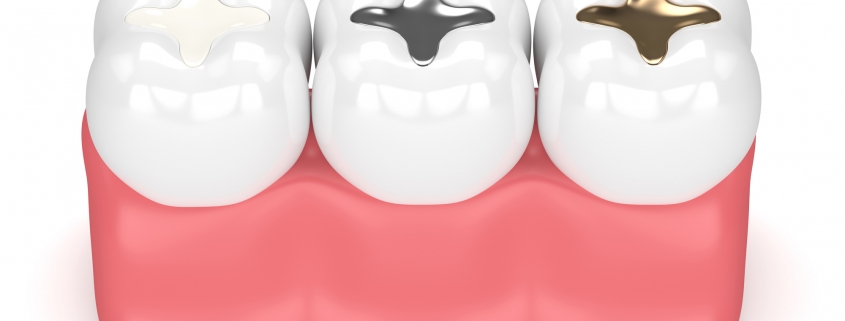What is the Difference Between Fillings, Inlays, and Onlays?
Fillings, inlays, and onlays all have one common goal and that it to fill gaps and holes both between and on your natural tooth. By doing so, they alleviate discomfort and restore your teeth back to their former glory.
But just because they all share a common goal, doesn’t mean they all treat the same issue. There are a number of factors that determine which treatment your dentist will deem best for you.
Let’s take a look at the various options.
Fillings: You probably know at least one person who has gotten a filling done, if nt yourself. In fact, when you think of the dentist, getting a filling because of a cavity is probably the first thing that pops into your head because it is such a common procedure. In turn, fillings are usually the go-to for dentists when filling in gaps and holes in your teeth, provided that the cavity is not too large. However, if the damage is more severe, a regular filling will not work. This is where inlays and onlays come into play.
Inlays and Onlays: As mentioned above, inlays and onlays function like fillings, but are used to treat more severe cases. Inlays are used to treat the inner hollowed out sections of your teeth–the chewing area–and are typically used on molars. Onlays are used for more broad and spread out damages, often covering the entire surface of the tooth.
Both are considered to be stronger than regular fillings and also provide the tooth with a very effective barrier against bacteria, preventing infection from reaching the exposed nerve endings. Inlays and Onlays, although more expensive than your traditional filling, may be worth the investment in the long run as they last longer and are easier to maintain.
When it comes to aesthetics, inlays and onlays also come in a variety of materials including porcelain, silver, and gold. Though it is entirely up to the patient which one they choose to go with, gold and silver are typically used on the back teeth, and porcelain is used at the front to disguise the fact that you had any dental work done.
Are you still unsure which option would be best for you? Schedule a free consultation with our office where we will assess your unique situation and make recommendations based on that. See you soon!

